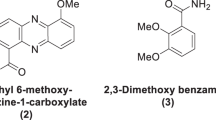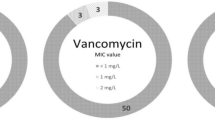Abstract
GRAM-POSITIVE cocci possess the ability to assimilate certain amino-acids and to concentrate them in the free state within the internal environment1,2. The level of free amino-acid attained within the cell is determined by the balance between the rate at which the amino-acid is assimilated from the external environment and the rate at which it is metabolized within the cell3. If the assimilation process is impaired, then the level of free amino-acid within the cell will fall as metabolism continues; conversely, if the internal metabolism is inhibited, then the level will rise to a saturation value. Studies on the assimilation and concentration of glutamic acid by Gram-positive cocci have shown that the Migration across the cell-wall requires energy which can be supplied by glycolysis1, and that the free amino-acid in the internal environment acts as a Source of glutamic acid for protein synthesis in the growing cell4, and also undergoes some other form of metabolism which is inhibited by triphenylmethane dyes3. When the cells are grown in penicillin, the assimilatory processes become impaired, with the result that glutamic acid and glutamine can no longer be assimilated from the external environment, and, since the internal metabolic processes are not affected, the level of free glutamic acid within the cell falls until protein synthesis, and consequently growth, can no longer take place5,6.
This is a preview of subscription content, access via your institution
Access options
Subscribe to this journal
Receive 51 print issues and online access
$199.00 per year
only $3.90 per issue
Buy this article
- Purchase on Springer Link
- Instant access to full article PDF
Prices may be subject to local taxes which are calculated during checkout
Similar content being viewed by others
References
Gale, E. F., J. Gen. Microbiol, 1, 53 (1947),
Taylor, E. S., J. Gen. MicrobioL, 1, 86 (1947).
Gale, E. F., and Mitchell, P. D., J. Gen. MicrobioL, 1 (Sept., 1947).
Gale, E. F., J. Gen. MicrobioL, 1 (Sept., 1947).
Gale, E. F., and Taylor, E. S., Mature, 158, 676 (1946).
Gale, E. F., and Taylor, E. S., J. Gen. MicrobioL, 1 (Sept., 1947).
Bellamy, W. D., and Klimek, J. W., J. Bact., 53, 374 (1947).
Author information
Authors and Affiliations
Rights and permissions
About this article
Cite this article
GALE, E. Correlation Between Penicillin Resistance and Assimilation Affinity in Staphylococcus Aureus. Nature 160, 407–408 (1947). https://doi.org/10.1038/160407a0
Issue Date:
DOI: https://doi.org/10.1038/160407a0
This article is cited by
-
Zweite wissenschaftliche Sitzung
Archiv f�r Dermatologie und Syphilis (1950)
-
Die Aktivierbarkeit des bakteriostatischen Penicillineffektes durch Metallspuren
Klinische Wochenschrift (1950)
-
Investigations on organic fungicides
Antonie van Leeuwenhoek (1950)
Comments
By submitting a comment you agree to abide by our Terms and Community Guidelines. If you find something abusive or that does not comply with our terms or guidelines please flag it as inappropriate.



